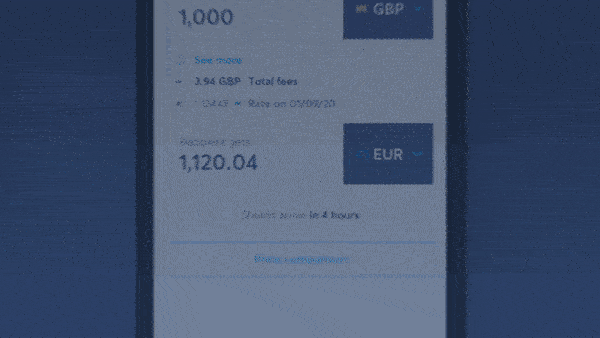How to use Apple Tap to Cash
Use Apple Pay? Find out how to use the Apple Tap to Cash feature on your iPhone and Apple Watch.

To understand a Backdoor Roth IRA, it is first important to break down what a Roth IRA is. And also, a traditional IRA.
IRA is short for individual retirement accounts. IRAs were created to help individuals, families and businesses prepare themselves and their employees for retirement.
With approval through the IRS, banks or financial institutions can provide IRAs to help people save and get tax deductions on their income now, or in the future.
| ℹ️ A Backdoor Roth IRA is a way to open a Roth IRA account by first opening a traditional IRA and then rolling over the proceeds into a Roth IRA. |
|---|
| 📝 Table of contents |
|---|
The logic behind IRAs is that tax rates are expected to be lower for those that enter or are in retirement. By letting people, in the case of a traditional IRA, put money pre-tax into an IRA now to grow, individuals can pay a lower tax rate on income taxes when they withdraw it in retirement.
A Roth IRA is categorically different in many ways. First, post tax money is used to fund a Roth IRA. So you can’t take tax deductions in the years you contribute to a Roth IRA.
Second, since money put in a Roth IRA has already been taxed, the income that is withdrawn in retirement is tax free.
But one of the largest differences between a traditional IRA and a Roth IRA, is who can qualify for a Roth IRA. And that is where a Backdoor Roth IRA comes in.
A Backdoor Roth IRA is not a technical term or specialized type of account. The backdoor-aspect of the name comes from the small loophole that exists for retirement accounts in order to open a Roth IRA.
A Backdoor Roth IRA is a method to take an existing 401(k) or traditional IRA and convert it into a Roth IRA. Rolling over an existing IRA or 401(k) is common and available to owners of either of these retirement vehicles.
But for a Backdoor Roth IRA, it is done instead of being able to open a Roth IRA directly.
Now why would one feel the need to do this? Because Roth IRAs have caps on who can open one, based on the owner’s income levels. A Backdoor Roth IRA helps individuals get around this barrier and open a Roth IRA anyway.
| 🎯 Quick Take: Backdoor Roth IRA |
|---|
|
When you are opening a Backdoor Roth IRA, that means that you are taking an existing 401(k) or traditional IRA and converting it to a Roth IRA.
Now Roth IRAs can only be funded with post-tax income. This causes a problem since a 401(k) or traditional IRA has not been taxed yet.
So converting a 401(k) or traditional IRA to a Roth IRA creates a taxable event where the owner will have to pay taxes on the amount in the account. Once the taxes are paid, the money then enters the Roth IRA post-tax.
Opening a Backdoor Roth IRA requires paying taxes now, which may not be appetizing for some. But the calculation is that if there are substantial sums or likelihood of a high income tax rate while in retirement, it could be beneficial to be able to withdraw money from a Roth IRA tax-free at that time in the future.
| ℹ️ Roth IRAs don’t have Required Minimum Distributions, or RMDs, which means your money can stay in the account,even when you’re well into your 70s. |
|---|
It is recommended to speak with a tax professional when it comes to your retirement planning, and deciding what is best for you and your retirement goals. Most banks and financial institutions will have retirement planning professionals to help you make the best decision for your needs.
Created in 1997, Roth IRAs were established to help people of all ages fund a retirement account. But it was also created to support those below a certain income level to help save for retirement.
In other words, Roth IRAs were not intended for the super wealthy amongst us.
Being able to qualify for a Roth IRA means that you fall below the annual income limit or cap. That income limit can change year to year and is dependant on the IRS’s qualification for your Modified Adjusted Gross Income and how you file your taxes:
| If you file as a... | Maximum Modified AGI to Open a Roth IRA |
|---|---|
| Married Couple filing jointly | $205,999 |
| Married but filing separately and not living with your spouse | $138,999 |
| Single | $138,999 |
| Qualifying widower | $205,999 |
| ℹ️ The Modified Adjusted Gross Income is the income you list on your tax filings before taking deductions like student loan interest. |
|---|
So if your annual income falls above the maximum Modified AGI limit for a Roth IRA, you are disqualified from opening a Roth IRA.
If you are living away from home, and want to send money back to the US, look no further than Wise to get your money where it needs to go. 🚀
With over 8 million customers around the world, you can deposit money straight to your US bank account at the real exchange rate and with just one low fee.

Open your free Wise account now
Unlike a Roth IRA, a traditional IRA does not have any income limits. So no matter your income level or filing status, you can fund a traditional IRA. But the contributions must come from a salary or income earned from working.
| ℹ️ Traditional IRA accounts do not have an income cap and can be opened for individuals or couples at any income level. |
|---|
And because there are no income limits to a traditional IRA, those who fall above the Roth IRA income caps can open a traditional IRA. Once that traditional IRA is open and funded, the owners can then create a Backdoor Roth IRA by rolling the traditional IRA over into a Roth IRA once all the taxes are paid.
With this additional step of opening a traditional IRA and then rolling it over, a Backdoor Roth IRA can be opened by those above the income cap and the income can be taken as tax-free in retirement.
Once you have gone through the backdoor process of opening a Roth IRA, your contributions and distributions to the account will follow that of a normal Roth IRA account.
Every year the IRS decides the max contribution amounts for Roth IRAs. Currently it is $6,000 per tax year if you are below 50 years of age. If you are above 50, you get a bump of $1,000 extra, making the max you can contribute $7,000.
Unlike a traditional IRA, a Roth IRA allows for contributions even when you are in retirement.
| ⚠️ Keep an eye out on updates or changes to the contribution limits every year. |
|---|
As mentioned, money withdrawn or distributed from a Roth IRA does not have to meet any RMD requirements, and are tax-free.
But one thing to note is that if you are below 59 ½ years old, the money rolled over from an existing IRA or 401 (k) is considered converted funds for 5 years. That means that you can’t take the money out penalty-free during that period.
If you are above 59 1/2 , then you can follow the regular Roth IRA distribution rules where withdrawals are penalty and tax-free in most cases.
If you want to move forward with doing a Backdoor Roth IRA, you will first want to contact a brokerage or investment firm, financial institution or bank that opens IRAs. Check with them for their ability to convert IRAs into a Roth IRA.
If you have an existing relationship with the firm or bank, you may be able to open the traditional IRA online.
The three basic steps for Backdoor Roth IRA conversion:
- Open a traditional IRA or use proceeds from an existing 401(K)
- Convert the 401(k) or traditional IRA to a Roth IRA, and pay taxes as necessary
- Maintain ownership of the Roth IRA and grow assets tax-free
You will need to present the proper documentation and sign the disclosures to open the traditional IRA.
Once it is open, it is suggested to make non-deductible contributions to the traditional IRA, but consult with your tax planner for that year.
Every individual’s retirement goals and risk tolerance are different, so it is advised to speak to a retirement planning professional or advisor to plan for opening a Backdoor Roth IRA.
Sources
*Please see terms of use and product availability for your region or visit Wise fees and pricing for the most up to date pricing and fee information.
This publication is provided for general information purposes and does not constitute legal, tax or other professional advice from Wise Payments Limited or its subsidiaries and its affiliates, and it is not intended as a substitute for obtaining advice from a financial advisor or any other professional.
We make no representations, warranties or guarantees, whether expressed or implied, that the content in the publication is accurate, complete or up to date.

Use Apple Pay? Find out how to use the Apple Tap to Cash feature on your iPhone and Apple Watch.

Read on for everything you need to know about sending and receiving international payments with Swift Go.

Here’s all you really need to know about making international transfers with Ria. We've done the research for you, so kick back and read on.

Read on for everything you need to know about sending and receiving international wire transfers with Nationwide UK.

Here’s everything you need to know about sending money orders with Walmart. We cover fees and costs, limits, and how to fill one out. Read on to learn more.

Here’s everything you need to know about sending money orders with Western Union. We cover fees and costs, limits, and how to fill one out.